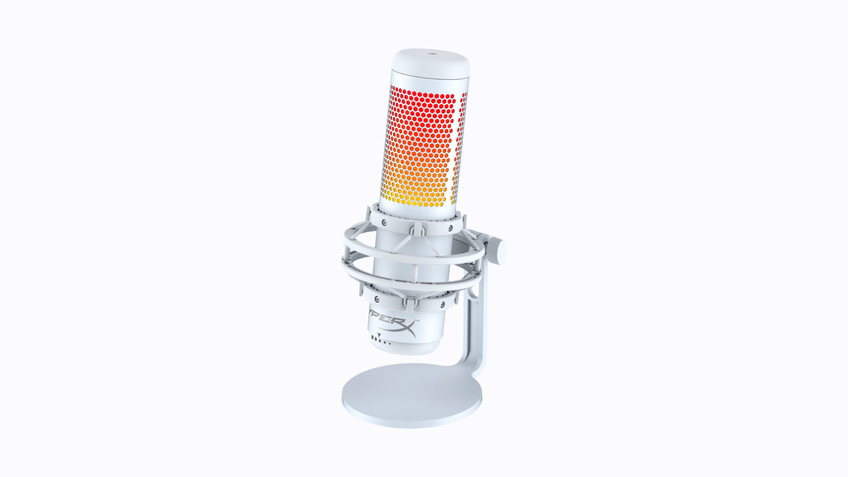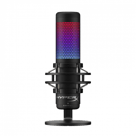Introduction
In times where the vast majority of the world’s population has been subjected to multiple online meetings (and the accompanying horrible, nasal-sounding dollar store microphones that usually come with them) a high quality microphone is without a doubt a smart investment. If you’re just using a mic to shout some callouts every now and again you probably don’t need an external microphone but if you’re planning on streaming or creating content, or you’re going to be working and meeting people online for the foreseeable future you’ll definitely want to think about purchasing a dedicated microphone.
The HyperX Quadcast is one of the usual suspects. It’s been one of the more popular external USB microphones in the gaming scene, and today we’re taking a look at the newest iteration of this product: the Quadcast S. The S features much of the same specs as its predecessor but it now comes with fully programmable RGB.
Read our full review to find out everything you want to know about this mic!
At A Glance
HyperX Quadcast S
Used by 7 players ()The Quadcast S has really impressed me. I know looks ultimately aren’t important for gaming gear but something like a mic (which mostly sits in your peripheral vision) definitely gets elevated by looking the part, and I love the way the Quadcast S looks with the seamless RGB.
Pros
- The multi-zone RGB looks nice
- Good microphone quality
- Muting by tapping the top of the mic is easy and convenient
- Polar pattern selector + onboard gain controls are handy
Cons
- Software is underwhelming
- Plosive filter isn’t great
First Impressions
I’ll start off by saying that I haven’t tested the regular Quadcast, so I can’t comment on the similarities and differences between that one and this newer S version. One obvious difference is of course the fact that the S has programmable RGB lighting, but both share the same specs page on HyperX’s website so I’m assuming they are very much alike when it comes to the overall specs but as I said can’t comment on smaller and more subtle differences in the sound quality or what have you.
On to my first impressions then, and those were good. It’s undeniable that this is a well built piece of equipment: the base is really solid and nicely weighted and the mic itself uses quality materials all over. The only thing that feels a tiny bit flimsy here is the shock guard frame: it flexes a little if you apply pressure to it but then again I assume that only helps with absorbing shocks so I’m not complaining. Speaking of: you can’t remove the shock guard from the mic itself (or at least you’re not supposed to) so bear that in mind if you don’t really like the look of the whole package. Luckily the mic portion is rather thin so all things considered the Quadcast S itself won’t look out of place on smaller desks or in more minimalistic environments.
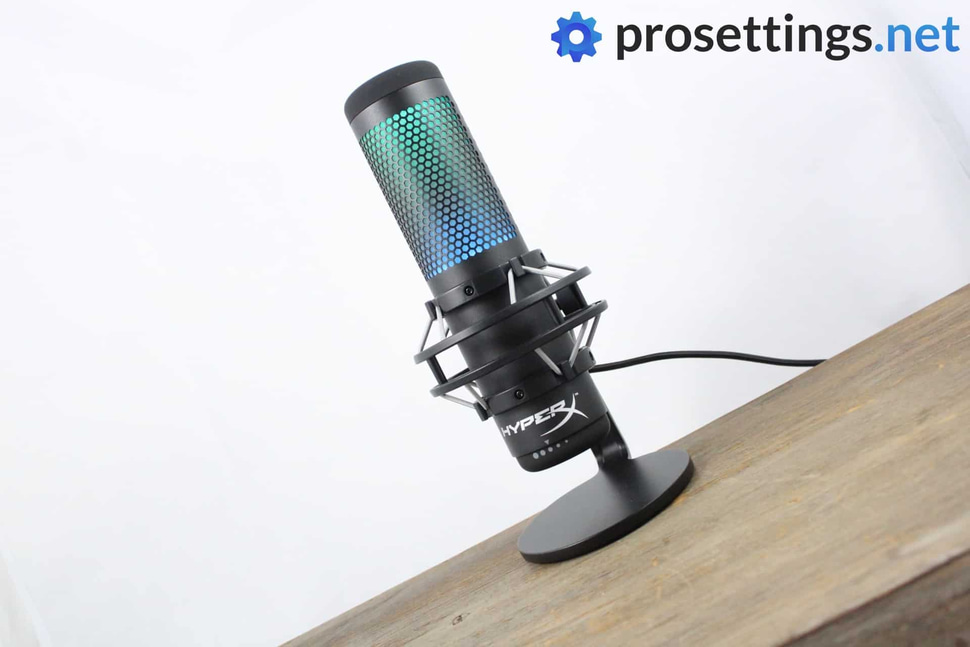
Then there are the RGB lights of course. I personally don’t care about RGB on things like mice or headsets (you don’t see that stuff when gaming anyway) but for things like keyboards or mics it can be a nice extra, and it’s definitely nice here. The transition between colors flows naturally and the mic almost looks as a kind of RGB lamp on your desk. I personally love the fact that it’s programmable (I’d rather have no RGB on a product than static RGB which could be in a color that I don’t like) and once I matched it up with the rest of my setup I really loved the look of this thing. You’re either a fan or RGB or you’re not but if you are then this will please you greatly.
Sound
With the Quadcast S you can choose between four different polar patterns so that you always have the right setup to match whatever it is you’re using it for. I suspect that most people will be using the cardioid pattern (which means that the mic picks up sound only in the front) but there’s also stereo, bidirectional, and omnidirectional. I mostly used the cardioid pattern since I’m basically looking at this as a mic for gaming or creating gaming related content (and the cardioid pattern makes the most sense in that case) but I also tested the other modes.
The Quadcast S sounds very clear, and if you’re coming from a regular headset mic you’ll no doubt be blown away by the sound: this outperforms even the best headset microphones with ease. It does sometimes sound a little bit too ‘digitized’ to me but that’s only in some circumstances and it’s a bit of a nitpick for sure. For a USB mic at this price point it definitely sounds really good, and if you truly want that natural sounding top of the line audio quality you hear from professional studios and the likes you’d have to go for way more complicated and dedicated audio setups so that’s not a fair comparison.
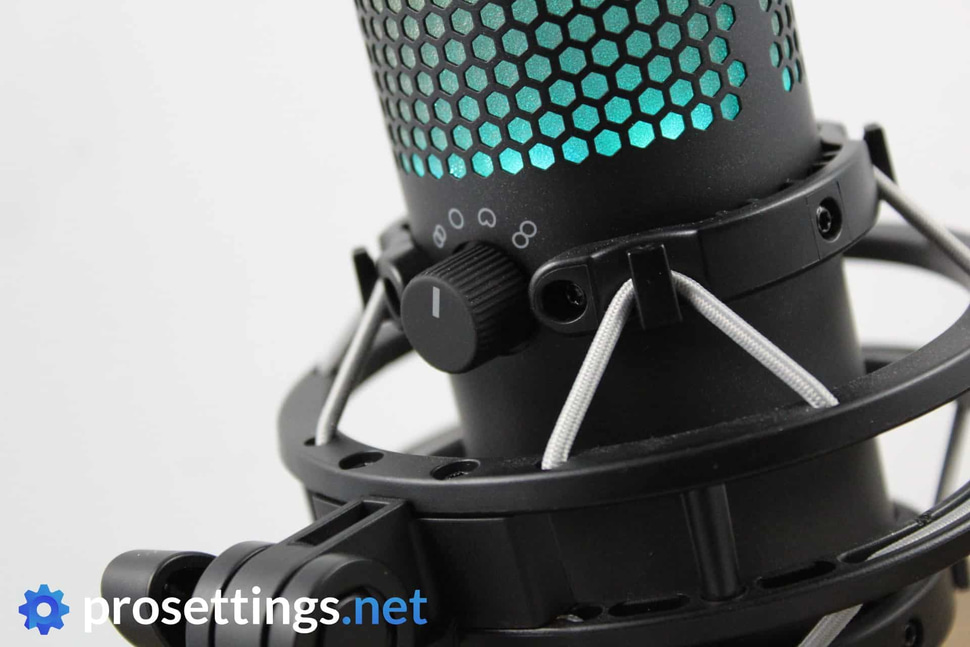
What’s nice here is that you can keep the mic far away from your mouth and still have it pick up your voice without it sounding extremely distant or noticeably worse, so if you want to keep it somewhere on your side you can. Of course you’ll have to find a balance here: increasing the gain on the mic also means it’ll pick up things like your keyboard more easily but I used it for a number of gaming sessions with it just sitting on its stand off to the side and received no complaints about background audio or anything like that.
As I said I did some testing of the other polar patterns, too. The stereo mode works fine in a pinch: this is mostly used for musical purposes and while I wouldn’t pick this mic if I was to record an album or anything like that it actually sounds pretty solid for a quick recording of a demo or what have you. I pulled out my guitar and I tried to illustrate the stereo effect to the best of my abilities in the sound clip to the right, and as you can hear (if you can excuse my singing) it does sound decent for simple music setups.

The bidirectional and omnidirectional modes do sound a bit worse than the cardioid pattern to me personally, but they’re not vastly inferior and it’s easy to recommend this mic to record a podcast or a quick interview if you don’t want to spend money on having multiple mics and what not. The omnidirectional mode will probably be the least used mode but it can be great if you’re doing a quiz night or whatever over the internet with your household and a couple of others since it picks up the entire room reliably.
Overall I’d say that the sound quality and overall sound performance of the Quadcast S is really impressive. Again: it’s important to look at these things in context. You can definitely get better sounding audio setups but you’d need to generally spend a lot more money and buy a bunch of extra equipment before you get to that point. For being a ‘jack of all trades’ USB mic this Quadcast S performs absolutely great.
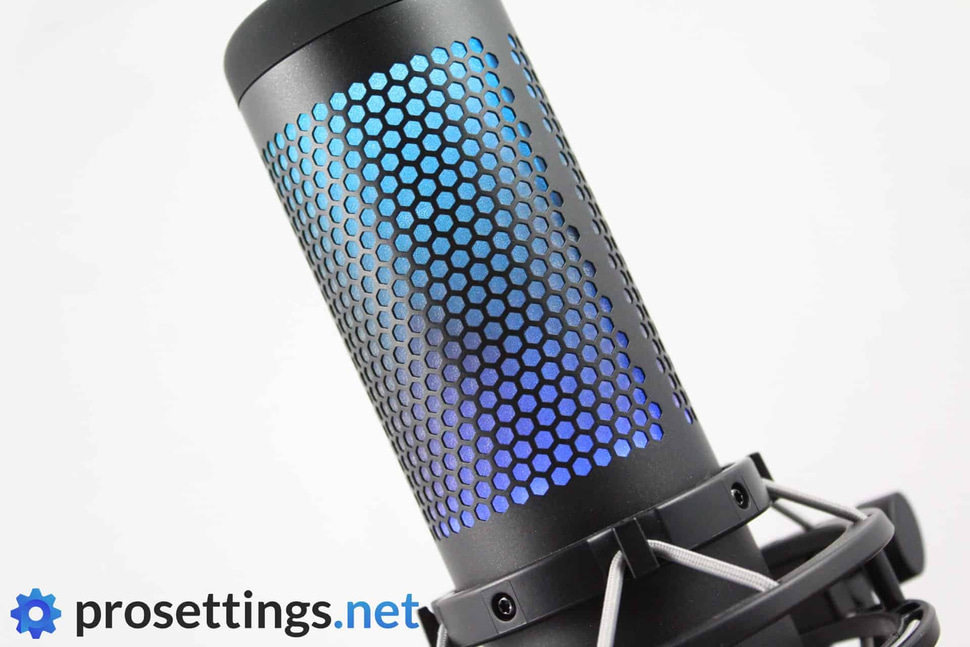
What’s a bit less impressive is the built in pop filter. It does a good job at a distance but once you get closer to the mic you can definitely hear some plosives here and there. That’s not a big problem since you can just move the microphone further away but if you need to keep it close to your mouth due to lots of background noise in the vicinity of your setup for example then this is something that you may want to consider.
Sound Tests
Cardioid
Stereo
Omnidirectional
Bidirectional
Features and Everyday Usage
The Quadcast S can be used without downloading anything at all but if you want to you can use HyperX’s NGENUINTY software. That’s an app on the Windows store (which I’m not a big fan of personally) and right now it’s rather barren. There’s the mic, monitor, and headphone volume sliders, and it indicates what polar pattern the mic is currently on but that’s it in the mic department. It’s nice that they give a little visual cue along with a short summary of what a certain polar pattern does and of course you can tweak the RGB but there are no other adjustments to be made.
Most of the adjusting can and will be done on the mic itself. The gain dial at the bottom of the Quadcast S rotates smoothly for on the fly adjustments but what I particularly like is the mute button. That sits on top of the microphone and you just have to tap it to mute the mic, which in turn turns off the RGB. I love this for two reasons: the first one being that it’s blatantly clear when the mic is muted but I also love the fact that you just have to give the Quadcast S a friendly tap on the head in order to silence it.
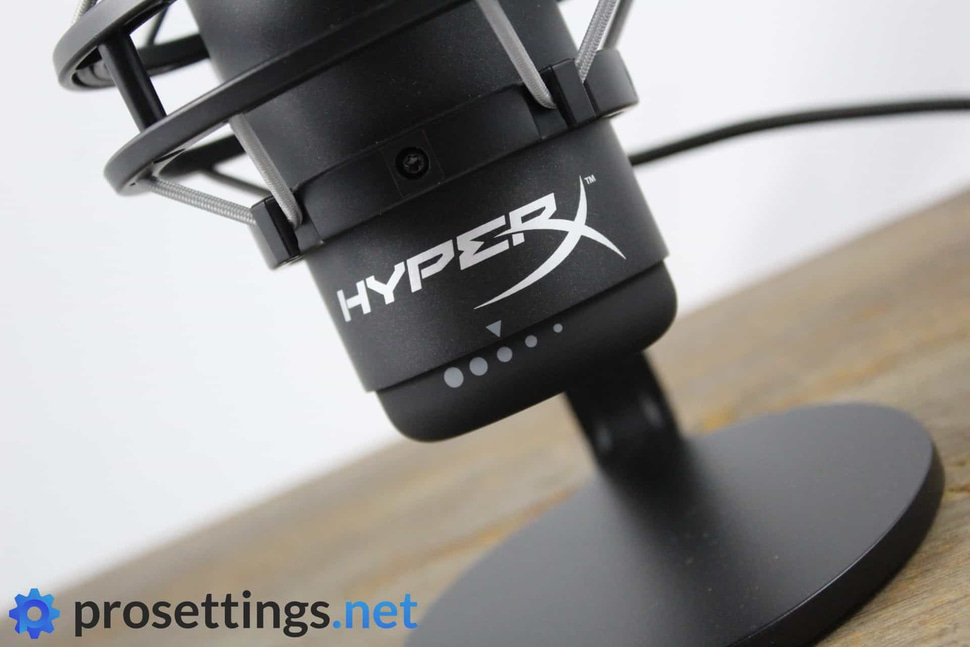
I personally make use of the mute function quite often when I’m on open mic calls with friends and when the mute button is hidden away somewhere it can cause an annoying rumbling to broadcast whenever I’m trying to push it, but not so with the Quadcast S. Muting is quiet, clear, and it’s very easy to see when you’re muted. I love it.
Last but not least there’s the shock mount. This does fine for me. I have a pretty sturdy desk and I am not really in the habit of hulk smashing anything so I didn’t really test it in explosive cases but it does a fine job at elegantly hiding away small small touches and vibrations.
Conclusion
The Quadcast S has really impressed me. I know looks ultimately aren’t important for gaming gear but something like a mic (which mostly sits in your peripheral vision) definitely gets elevated by looking the part, and I love the way the Quadcast S looks with the seamless RGB.
Luckily the sound matches: it sounds really nice and clear, and with the polar pattern selector and onboard gain controls you’re guaranteed to find a setup that suits your exact needs, whether you’re using it for a podcast or to chat with your mates while you’re gaming. All in all this is a great plug and play, all-in-one USB microphone that can be used for a variety of purposes aside from streaming or content creation.
Sadly the software is a little bit underwhelming and the internal plosive filter isn’t all that if you’re in the habit of placing your microphone close to your mouth but aside from that this should be a great option for people who are looking to become a content creator, or for people who want to upgrade their audio quality for those long online sessions with their friends and family during (and after) this pandemic.
This product was received for free from the manufacturer and given to our reviewer to test and review. Brands and manufacturers have no editorial control over our reviews. For more information, check out our review FAQ.


